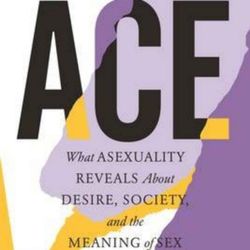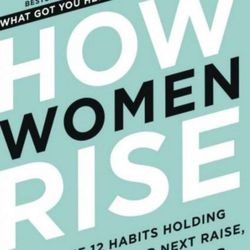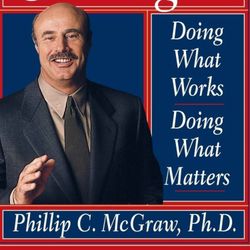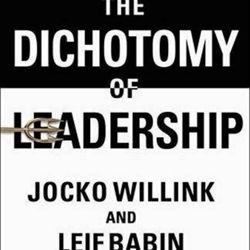Latest episode

Under the Surface: Unpacking the Complexities of Asexuality in The Book Ace by Angela Chen
04:49|Chapter 1:Summary of The Book Ace"The Book of Ace" by Angela Chen is a thought-provoking exploration of asexuality and the complexity of human relationships. Through the lens of the protagonist, Ace, the book delves into themes of identity, desire, and acceptance. Ace grapples with their own asexuality and the challenges they face in a society that often prioritizes sexual relationships. The novel examines the importance of communication, boundaries, and self-discovery in forming meaningful connections with others. Overall, "The Book of Ace" offers a poignant and insightful portrayal of asexuality and the spectrum of human experience.Chapter 2:the meaning of The Book AceThe book Ace by Angela Chen explores the experience of asexuality, a lesser known and often misunderstood sexual orientation. Through personal stories, research, and cultural analysis, Chen discusses what it means to be asexual in a world that values and prioritizes sexual relationships. She also addresses the complexities of relationships, desire, and identity for asexual individuals. Overall, the book seeks to increase understanding and acceptance of asexuality as a legitimate and valid part of the spectrum of human sexuality.Chapter 3:The Book Ace chaptersChapter 1: Introduces the main character, Ace, a young woman who is a successful entrepreneur. She is known for her intelligence, hard work, and determination.Chapter 2: Ace reflects on her childhood and how she developed her love for business and entrepreneurship. She also introduces her close friends and business partners.Chapter 3: Ace is faced with a new business opportunity that could potentially change her life. She considers the risks and rewards of this new venture.Chapter 4: Ace dives into the new business opportunity, facing challenges and obstacles along the way. She relies on her friends and mentors for support and guidance.Chapter 5: As Ace's business begins to grow, she faces competition from rival companies. She must navigate the competitive landscape while staying true to her values and vision.Chapter 6: Ace juggles the demands of running a successful business while also trying to maintain a work-life balance. She learns to prioritize her own well-being and happiness.Chapter 7: Ace reaches a major milestone in her business, but must confront a personal crisis that threatens to derail her progress. She turns to her friends for support during this difficult time.Chapter 8: Ace reflects on her journey as an entrepreneur and the lessons she has learned along the way. She realizes that success is not just about achieving goals, but also about personal growth and fulfillment.Chapter 9: In the final chapter, Ace celebrates her achievements and looks towards the future with optimism and excitement. She is proud of all that she has accomplished and is ready for whatever challenges lie ahead.
More episodes
View all episodes

Unveiling the Science of Love: A Journey Through 'Wired for Love' by Stan Tatkin
04:34|Chapter 1:Summary of The Book Wired for Love"Wired for Love" by Stan Tatkin is a guide for couples on how to build a secure and lasting relationship. Tatkin explains that understanding the brain's relationship systems can help partners communicate effectively and work through conflicts. He introduces the concept of "attachment theory" and provides practical strategies for navigating disagreements, managing emotions, and fostering connection. The book emphasizes the importance of building trust, mutual respect, and emotional attunement in order to create a healthy and fulfilling relationship. Overall, "Wired for Love" offers insights and tools for couples to strengthen their bond and create a strong foundation for a lifelong partnership.Chapter 2:the meaning of The Book Wired for LoveThe book "Wired for Love" by Stan Tatkin explores the science behind romantic relationships and provides insights into how to strengthen and improve your relationship with your partner. Tatkin argues that humans are hardwired for connection and that understanding the unique attachment styles of individuals can help foster greater intimacy and emotional security in relationships. The book offers practical advice and exercises to help couples become more attuned to each other's needs and build a strong foundation for lasting love. Overall, "Wired for Love" advocates for more intentional and mindful approaches to building and maintaining healthy and fulfilling relationships.Chapter 3: 10 Quotes From The Book Wired for Love1. "The most powerful force in the world, love, can also be the most destabilizing, as it can make people do things they never thought they were capable of."2. "Our brains are designed to be as energy-efficient as possible, and as a result, they rely heavily on patterns and habits to conserve resources."3. "When it comes to relationships, our brains are wired to prioritize connection over almost everything else."4. "People are wired to be sensitive to the emotional cues of their loved ones, and this is why they can pick up on even subtle changes in mood or behavior."5. "In order to maintain a healthy and loving relationship, it is important to create a secure base for both partners, where they feel safe, understood, and cared for."6. "Common relationship challenges often stem from our attachment styles, which are formed in early childhood and impact our ability to connect with others throughout our lives."7. "It is crucial for partners to cultivate empathy for each other, as this can help navigate conflicts and disagreements in a healthy and productive way."8. "One of the key components of a successful relationship is understanding and accepting each other's differences, rather than trying to change or control them."9. "Building trust and safety in a relationship requires consistent effort and communication, as well as a willingness to be vulnerable and open with each other."10. "Ultimately, the key to a fulfilling and lasting relationship lies in prioritizing the well-being and happiness of your partner, as well as your own."
No Limits: Embracing Rejection on the Road to Success
04:54|Chapter 1:Summary of The Book Go for No! Yes is the Destination, No is How You Get ThereThe book "Go for No! Yes is the Destination, No is How You Get There" by Richard Fenton and Andrea Waltz is a motivational guide that encourages readers to embrace rejection and failure as a necessary part of achieving success. The authors emphasize that in order to reach your goals and dreams, you must be willing to face rejection and push past your fear of failure.The book presents the idea that the key to achieving success is to view rejection as a positive learning experience, rather than a setback. By seeking out rejection and pushing yourself to achieve more "no's," you are actually increasing your chances of reaching your ultimate goal.Fenton and Waltz provide practical strategies and exercises that readers can use to change their mindset around rejection and failure, and reframe their thinking to embrace a "no" as a stepping stone to a "yes." They argue that by changing our perception of rejection, we can ultimately create more opportunities for success in our personal and professional lives.Overall, "Go for No!" is a powerful and thought-provoking book that challenges readers to step outside of their comfort zones and embrace rejection as a necessary part of the journey to success. It offers a fresh perspective on failure and rejection, and empowers readers to push past their fears and limitations in order to achieve their goals.Chapter 2:the meaning of The Book Go for No! Yes is the Destination, No is How You Get ThereThe book "Go for No! Yes is the Destination, No is How You Get There" by Richard Fenton encourages readers to embrace rejection and not be afraid of hearing the word "no." The author argues that by seeking out rejection and not being deterred by it, individuals can overcome their fear of failure and achieve greater success in their personal and professional lives. The book emphasizes the importance of persistence, resilience, and a positive attitude in pursuing one's goals and dreams. Ultimately, the message of the book is that rejection is not a setback, but rather a necessary stepping stone on the path to success.Chapter 3: 10 Quotes From The Book Go for No! Yes is the Destination, No is How You Get There1. "The number one reason people fail to achieve their goals and dreams is that they give up too soon when they face rejection." 2. "Every no gets you closer to a yes. The more no’s you get, the closer you are to your next yes." 3. "Success is not about avoiding rejection; it's about learning to embrace it and use it as a stepping stone to achieving your goals." 4. "Rejection is not a reflection of your worth or abilities; it's simply a part of the process of achieving success." 5. "The more rejection you face, the more resilient you become. Embrace rejection as a learning experience and a stepping stone to success." 6. "Don't let the fear of rejection hold you back from pursuing your dreams. Embrace rejection as a necessary part of the journey to success." 7. "Successful people don't view rejection as a failure; they see it as a necessary step on the path to achieving their goals." 8. "Every no you receive is a chance to learn and grow. Embrace rejection as a valuable opportunity for self-improvement." 9. "The most successful people in the world have faced rejection countless times. It's not a question of if you'll face rejection but how you'll respond to it." 10. "No is not the end; it's just a stepping stone on the path to your ultimate destination of yes."
Rising Above Limitations: A Guide for Women on Achieving Success
04:16|Chapter 1:Summary of Book How Women Rise"How Women Rise" by Sally Helgesen is a book that explores the common pitfalls that hold women back in their careers and offers practical strategies for overcoming them. The author identifies specific behaviors and habits that can limit women's success, such as minimizing accomplishments, seeking perfection, and avoiding conflict. She also outlines seven key strategies for women to advance their careers, including owning their achievements, speaking up, and building strong relationships. Through real-life examples and actionable advice, Helgesen empowers women to break through the barriers that may be holding them back and achieve their full potential in the workplace.Chapter 2:the meaning of Book How Women Rise"How Women Rise" by Sally Helgesen is a book that explores the specific challenges that women face in professional settings and offers practical advice on how they can overcome these obstacles to achieve success in their careers. The book identifies common habits and behaviors that can hold women back from reaching their full potential, and provides strategies for breaking through these barriers to realize their goals. Through real-life examples and insights from successful women leaders, "How Women Rise" offers a roadmap for women to elevate their careers and advance in the workplace.Chapter 3:Book How Women Rise chaptersChapter 1: The Habit of Reluctance - This chapter delves into the first habit that holds women back from reaching their full potential, which is reluctance to claim their achievements and take credit for their success.Chapter 2: Expecting Others to Spontaneously Notice and Reward Your Hard Work - The second chapter explores the common misconception that hard work alone will lead to recognition and advancement, and how women need to actively promote themselves and their accomplishments.Chapter 3: Overvaluing Expertise - This chapter discusses how women often get stuck in their comfort zone of expertise and perfectionism, missing out on opportunities to expand their skill set and take on new challenges.Chapter 4: Building Rather Than Leveraging Relationships - The fourth chapter highlights the tendency for women to focus too much on building relationships and not enough on leveraging those relationships for career advancement.Chapter 5: Failing to Enlist Allies from Day One - In this chapter, the importance of seeking out allies and sponsors early in one's career is emphasized, as they can provide valuable support and advocacy.Chapter 6: Putting Your Job Before Your Career - The sixth chapter explores how women often prioritize their current job responsibilities over long-term career goals, neglecting to invest in their professional development.Chapter 7: The Disease to Please - The final chapter addresses the habit of prioritizing the needs and expectations of others over one's own desires and ambitions, and offers strategies for overcoming the need to constantly seek approval and validation from others.
The Road to Success: Life Strategies That Work and Matter
04:22|Chapter 1:Summary of The Book Life Strategies: Doing What Works, Doing What MattersIn "Life Strategies: Doing What Works, Doing What Matters" by Phillip C. McGraw, the author provides practical advice for readers to take control of their lives and make positive changes. McGraw emphasizes the importance of setting clear goals, taking responsibility for one's actions, and overcoming self-defeating behaviors. He encourages readers to identify their values and beliefs, prioritize what matters most to them, and make choices that align with their personal values.McGraw also addresses common obstacles that can prevent people from achieving their goals, such as fear of failure, procrastination, and negative thinking. He offers strategies for overcoming these obstacles and building a strong foundation for success. Throughout the book, McGraw shares real-life examples and anecdotes to illustrate his points and inspire readers to take action.Overall, "Life Strategies" is a practical guide for individuals seeking to improve themselves and create a more fulfilling life. McGraw's no-nonsense approach and straightforward advice make it a valuable resource for anyone looking to make positive changes in their personal and professional lives.Chapter 2:the meaning of The Book Life Strategies: Doing What Works, Doing What MattersThe book "Life Strategies: Doing What Works, Doing What Matters" by Phillip C. McGraw is a self-help book that focuses on providing practical strategies and advice for improving various aspects of one's life. Dr. Phil, as he is commonly known, offers insights on how to take control of your life, set meaningful goals, overcome obstacles, and create a fulfilling and successful life. He emphasizes the importance of taking action and making choices that align with your values and priorities. The book aims to help readers make positive changes in their lives and achieve greater happiness and fulfillment.Chapter 3: 10 Quotes From The Book Life Strategies: Doing What Works, Doing What Matters1. “Success is not a random event, it is a process that must be strategically devised and implemented.”2. “The most successful people in the world don’t just work hard, they work smart.”3. “Your actions speak louder than your words. Make sure they are in alignment with your goals.”4. “Don’t just go through the motions of life, take charge and create the life you want.”5. “True happiness comes from living a life that is authentic and true to yourself.”6. “Success is not just about achieving your goals, it’s about living a life that is fulfilling and meaningful.”7. “Focus on what truly matters to you and let go of the rest.”8. “Don’t let fear or self-doubt hold you back from pursuing your dreams.”9. “Embrace change as an opportunity for growth and self-discovery.”10. “Life is not about finding yourself, it’s about creating yourself. Don’t be afraid to take risks and step outside of your comfort zone.”
The Dichotomy of Leadership: Finding Balance and Success in a Complex World
04:17|Chapter 1:Summary of The Book The Dichotomy of Leadership"The Dichotomy of Leadership" is a book by Jocko Willink and Leif Babin that explores the balance of leadership in tough situations. The authors draw on their experiences as Navy SEAL officers to provide insights on how leaders can navigate the complexities of leadership.The book emphasizes the importance of balancing seemingly contradictory elements of leadership, such as being both aggressive and prudent, humble and decisive, and leading and following. Willink and Babin argue that effective leadership requires finding the right balance between these dichotomies in order to achieve success.Through personal stories and practical guidance, the authors show how leaders can apply these principles in their own lives and businesses. Overall, "The Dichotomy of Leadership" offers a valuable perspective on leadership and how to navigate the challenges of leading in today's complex world.Chapter 2:the meaning of The Book The Dichotomy of LeadershipThe book, "The Dichotomy of Leadership" by Jocko Willink, explores the concept of balancing different leadership qualities and traits in order to effectively lead others. Willink discusses how leaders must balance being both aggressive and thoughtful, disciplined and flexible, confident and humble, to navigate the complexities of leadership successfully. The book emphasizes that leaders must understand and navigate these dichotomies in order to lead effectively and achieve success in their endeavors.Chapter 3: 10 Quotes From The Book The Dichotomy of Leadership1. "Leaders must balance the dichotomies of leadership: humility and confidence, action and patience, and decisiveness and flexibility."2. "Leading is about creating an environment where people can rise to their potential. But to do that, leaders must first rise above their own egos."3. "When in a leadership role, it can be easy to fall into the trap of micromanaging. But true leadership means trusting your team to execute on their own, and being there to support and guide them when needed."4. "Learning to be humble does not mean being weak. It means recognizing your limitations and leveraging the strengths of those around you."5. "Decisiveness is a critical trait of a leader, but it must be balanced with flexibility. Sometimes the best decision is to adapt and change course when necessary."6. "Leaders must take ownership of both their successes and their failures. Blaming others or external factors only serves to undermine trust and credibility."7. "Patience is a crucial quality for a leader. It is about knowing when to act and when to wait, and understanding that not every problem can be solved immediately."8. "Leading with discipline means setting a high standard for yourself and your team, and holding everyone accountable to meeting that standard."9. "Leaders must have the courage to make tough decisions, even when they are unpopular. It is about doing what is right, not what is easy."10. "Leadership is not about being perfect, it is about continuously striving to be better and learning from your mistakes."
Journey to Self-Rediscovery: You'll Come Back to Yourself
03:51|Chapter 1:Summary of You'll Come Back to Yourself"You'll Come Back to Yourself" by Michaela Angemeer is a heartfelt poem that explores themes of self-discovery, healing, and resilience. The poem speaks to the idea that even in times of darkness and loss, there is always a way back to oneself. Through evocative imagery and powerful language, Angemeer encourages the reader to trust in their own inner strength and ability to find their way back to a sense of wholeness and self-acceptance. Ultimately, the poem conveys a message of hope and the belief that no matter how lost or broken one may feel, they have the power to heal and come back to themselves.Chapter 2:the meaning of You'll Come Back to Yourself"You'll Come Back to Yourself" by Michaela Angemeer is a poem that explores the experience of feeling lost or disconnected from oneself, but ultimately finding a way back to who you truly are. The poem suggests that no matter how far we may stray from our true selves, we have the power to rediscover and reconnect with our inner strength and identity. It serves as a reminder that we are capable of overcoming challenges and finding our way back to a place of self-acceptance and authenticity.Chapter 3:You'll Come Back to Yourself chapters1. Introduction: The author introduces the concept of self-discovery and personal growth, emphasizing the importance of reconnecting with one's true self.2. Chapter 1: The author reflects on her own journey of self-discovery, discussing the challenges and obstacles she faced along the way.3. Chapter 2: The author explores the role of self-awareness in the process of personal growth, highlighting the importance of mindfulness and introspection.4. Chapter 3: The author discusses the significance of self-acceptance and self-love, emphasizing the need to embrace one's strengths and weaknesses.5. Chapter 4: The author delves into the topic of healing and forgiveness, exploring how letting go of past hurts and resentments can lead to inner peace and emotional well-being.6. Chapter 5: The author shares practical tips and exercises for reconnecting with one's true self, such as journaling, meditation, and self-reflection.7. Chapter 6: The author concludes by emphasizing the importance of staying true to oneself and following one's own path, no matter what challenges may arise. She encourages readers to trust in their own inner wisdom and intuition.Overall, "You'll Come Back to Yourself" is a guide to self-discovery and personal growth, providing insightful reflections and practical advice for reconnecting with one's true self and living a more fulfilling life.Chapter 4: 10 Quotes From You'll Come Back to Yourself1. "You may lose yourself for a while, but you'll come back to yourself eventually."2. "Sometimes we have to lose ourselves in order to find ourselves again."3. "No matter how far you wander, you'll always find your way back to yourself."4. "The journey back to yourself may be long and difficult, but it will be worth it in the end."5. "Don't be afraid to get lost, for you will always come back to yourself."6. "You may stray from the path, but you'll find your way back to yourself in the end."7. "Even when you feel as though you've lost yourself completely, remember that you will come back to yourself."8. "No matter how dark it may seem, there is always a light at the end of the tunnel leading you back to yourself."9. "Sometimes you need to lose yourself in order to truly appreciate who you are when you come back to yourself."10. "Trust that no matter how far you drift from yourself, you'll always find your way back home."
